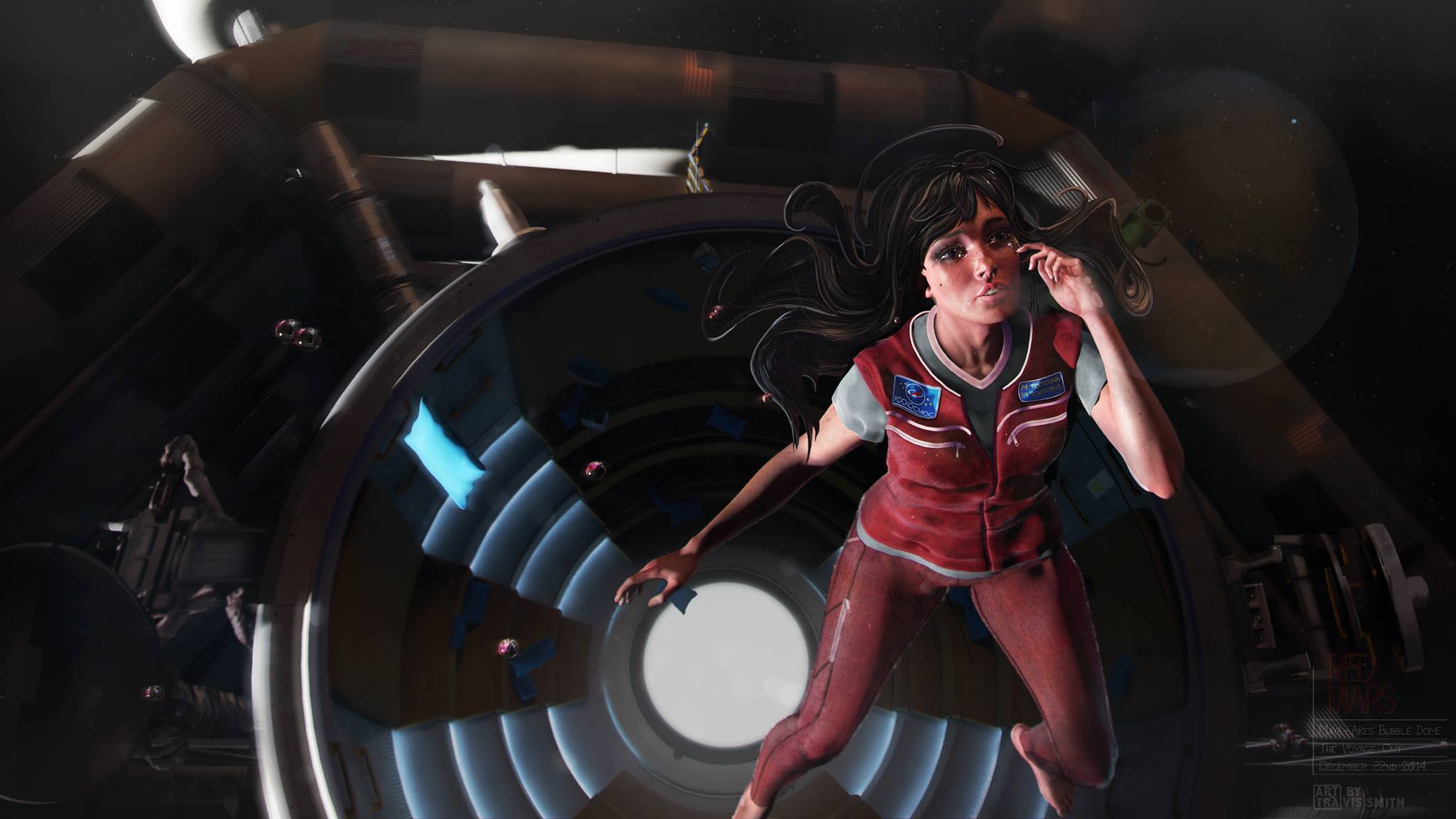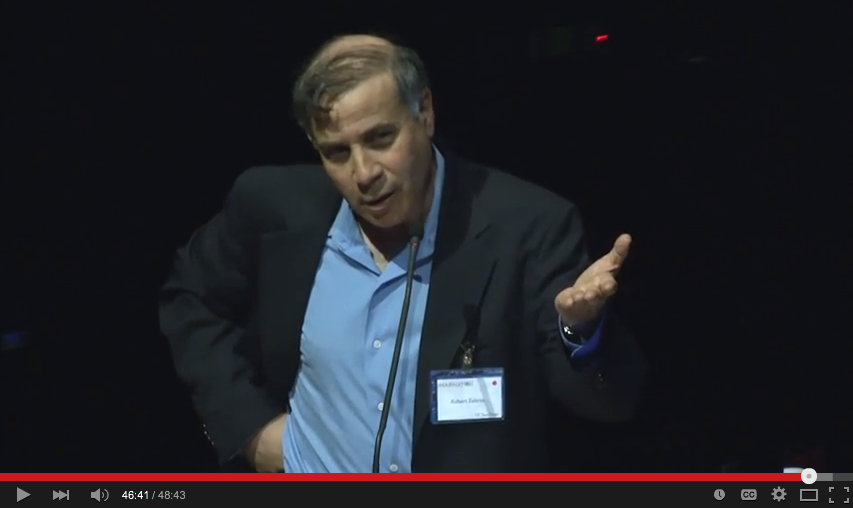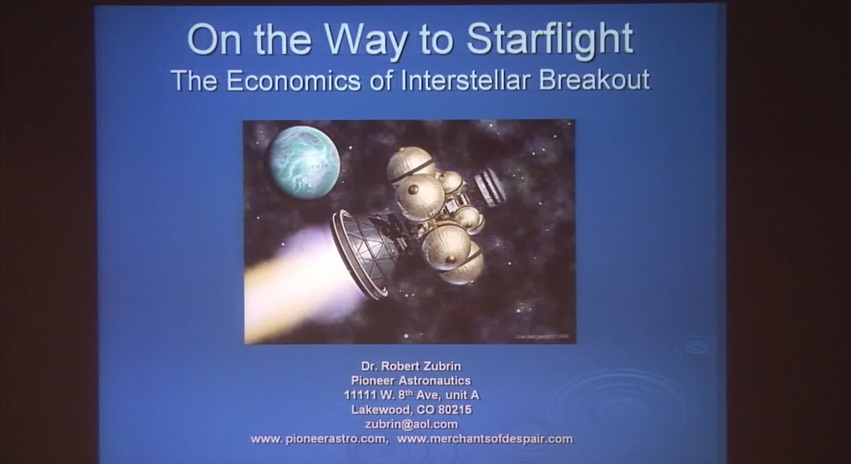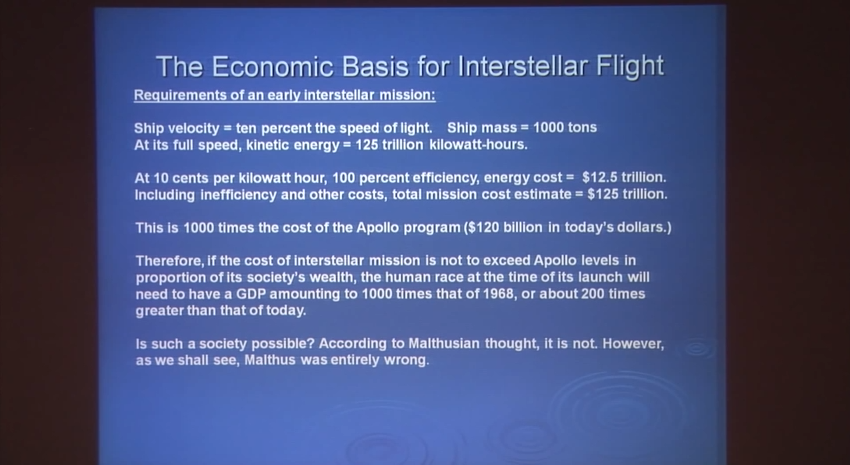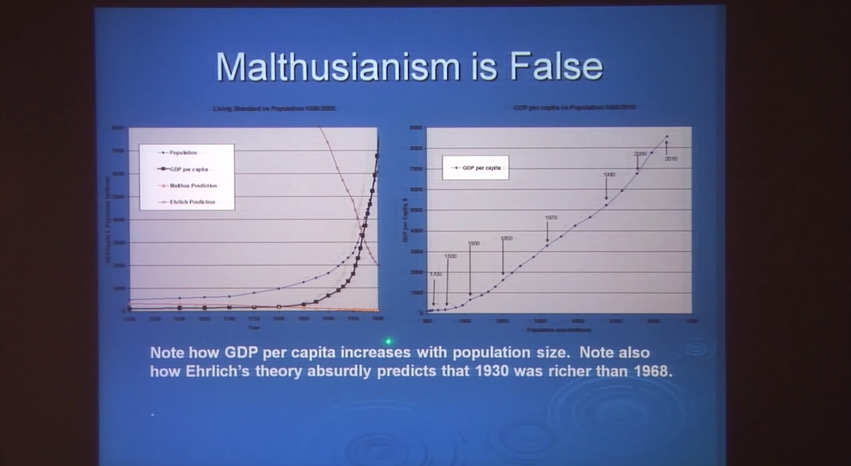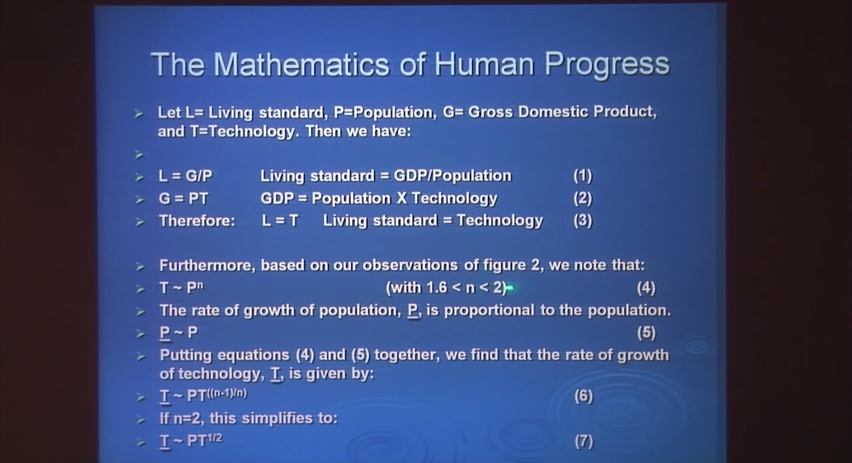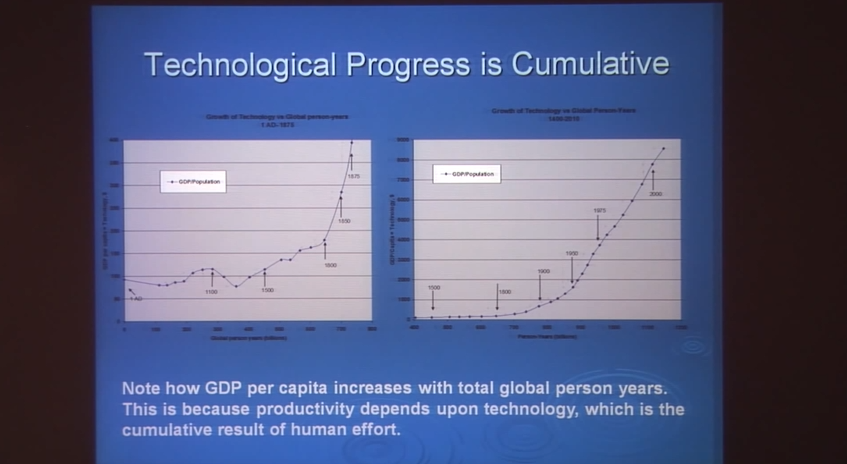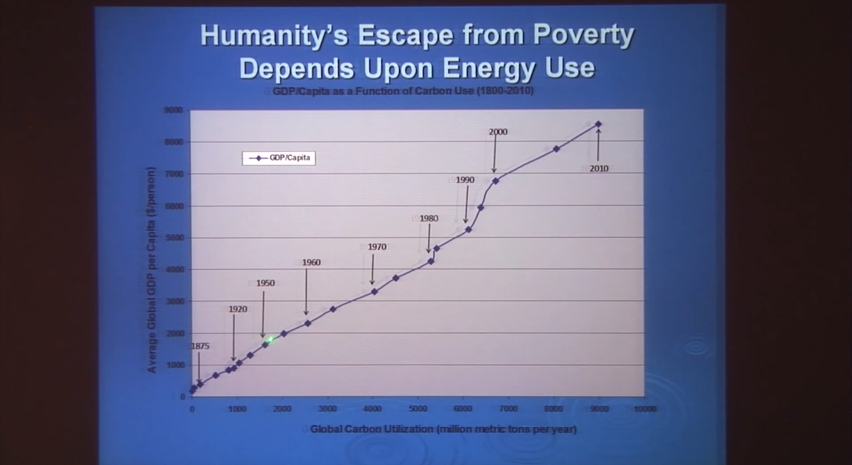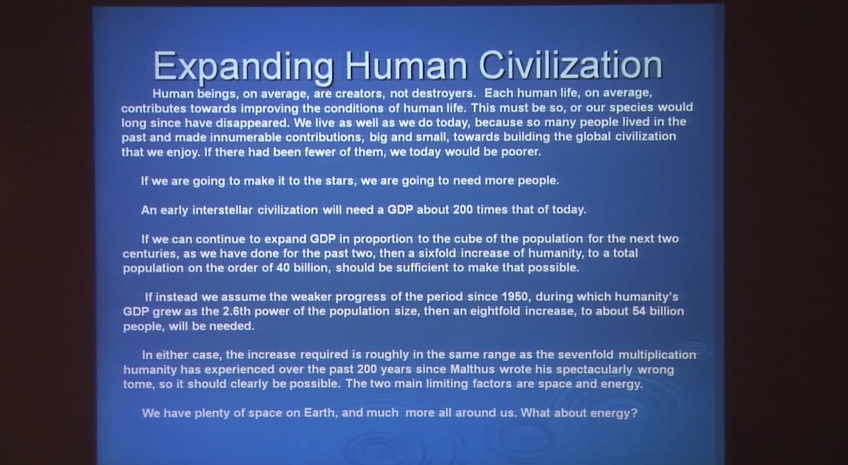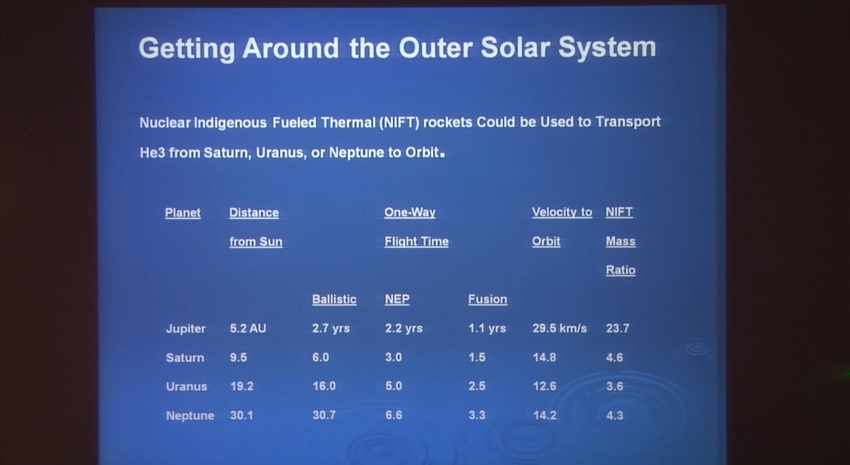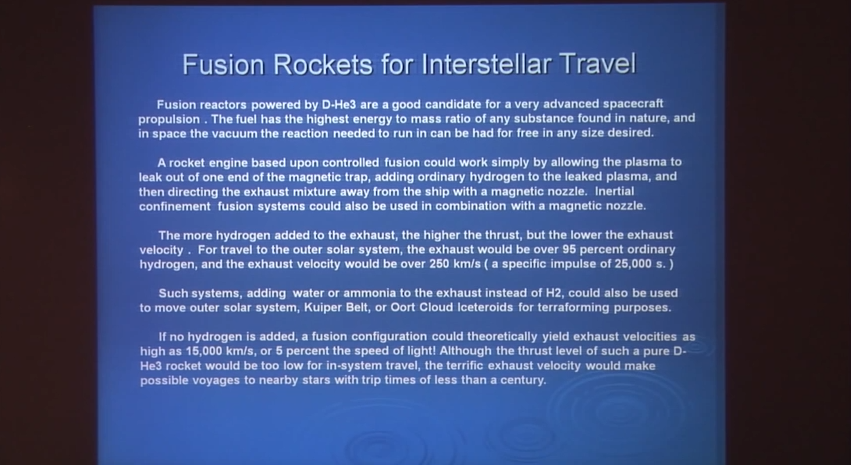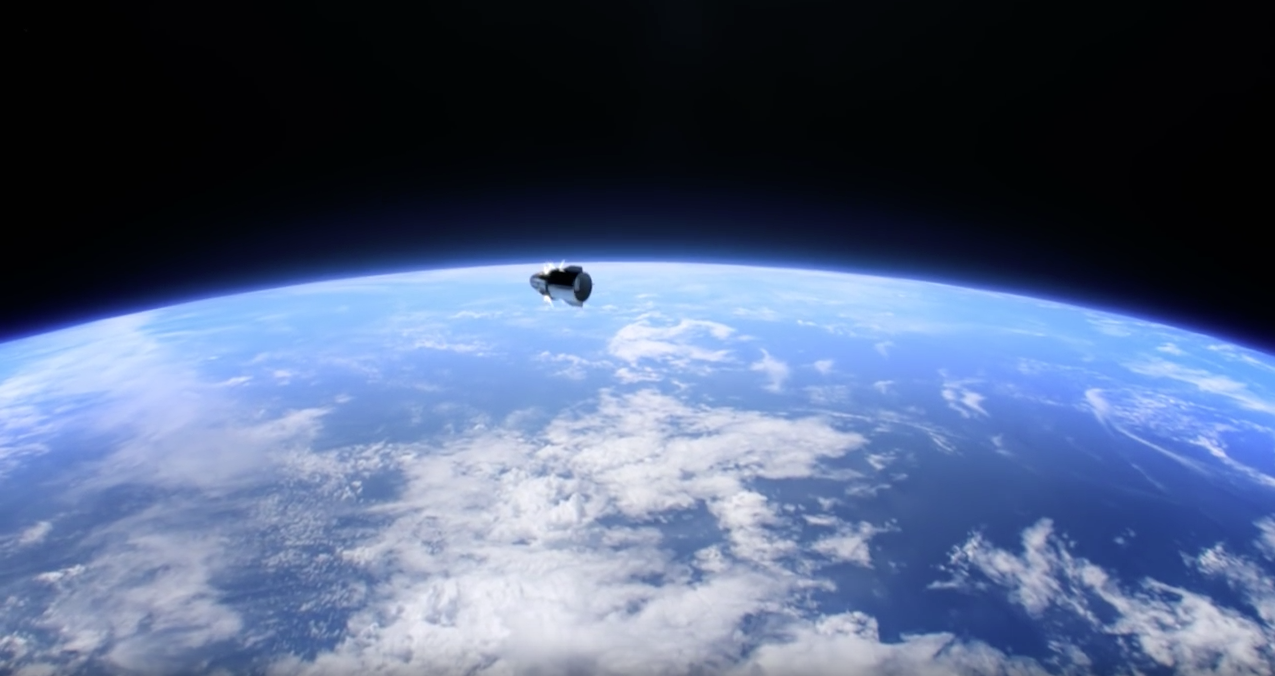
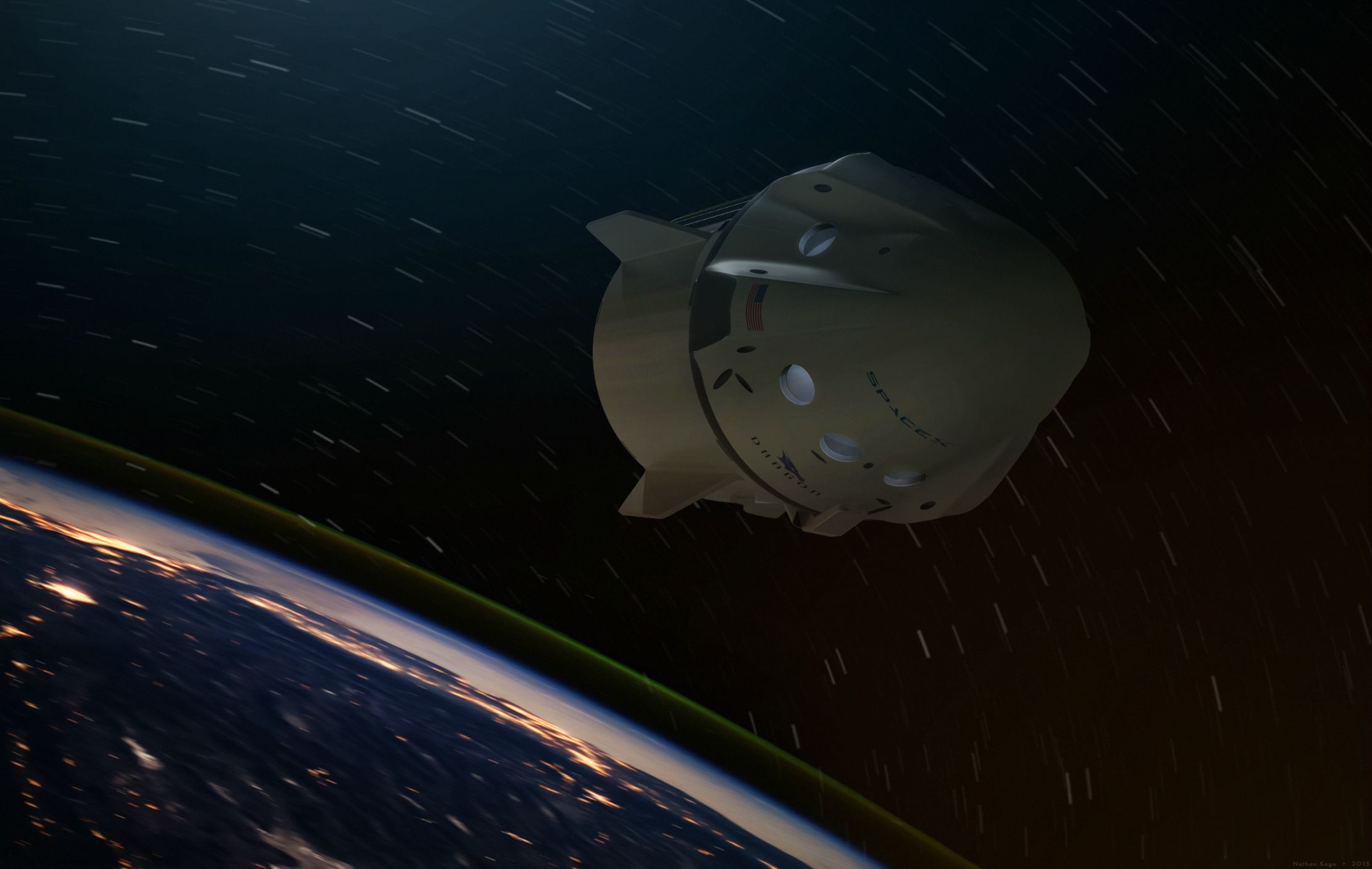
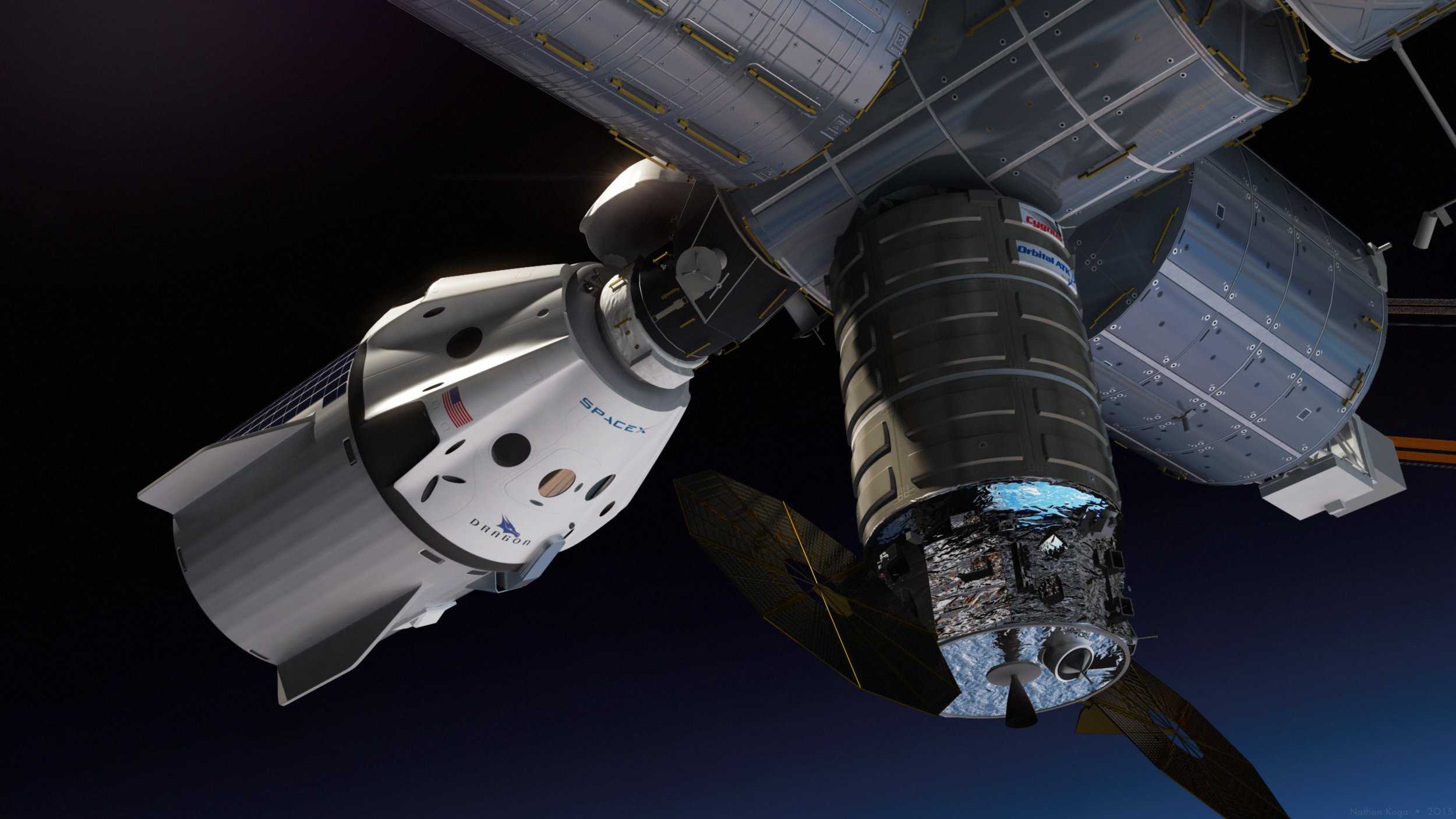


Monthly Archives: December 2014
Travis Smith: “Maya on the Ares” (KSR RGB)
ForaTV: Gwynne Shotwell
Gwynne: “We’re working on the vehicles – some of the architectures for the vehicles right now – we should have some big engines on stands in a couple of years and hopefully we’ll land some folks in thirteen, fifteen years.”
We’re talking ordinary people?
Gwynne: “Explorers. But more ordinary than current astronauts, that’s for sure. Lot’s of engineers.”
Engineers with an interest in space but who maybe didn’t train to be an astronaut.
Gwynne: “Well you know once you land on Mars space isn’t that important – now you’ve got a planet, you’ve to make it livable, um, one of the funniest things I’ve ever heard Elon say was that Mars was a fixer upper planet. Um. There’s a lot of work to do, there’s no atmosphere, ah, you’re going to hafta mine the water. […] I’m a mechanical engineer I don’t know how to build atmospheres, but, ah, I’m willing to look into it. Um, so, we have to build atmosphere, we have to figure out how to protect humans from radiation. […] It seems really a shame that the human species – that humans – that we’re done. That Earth is it. And I’m not saying that there aren’t things to explore and learn here. I think we can learn much more about our physical selves, or mental selves. We can learn more about um, life in the oceans. But, seems like you gotta find a new boundary to go take over, and pass, pass through. So there’s that piece: humans are – kinda the philosophical, humans are – we’re differentiated because we want to explore and learn new things. Um, and the other thing that’s fundamental it’s risk management. Something will happen, on Earth, to cause, a calamity. Now is it in two years? Probably not. Is it in a hundred years? Maybe not. But certainly within the next millennium, ah, something will happen and I think it’s really important for humans to have an alternative. -Now that’s the crazy talk by the way – that’s when you lose people at the restaurant, they’re not paying attention, they’re like, ‘Ooo don’t give her another chardonnay. She’s done.'”
ESA Mars Express: “Flying Over Becquerel Crater”
STEPHEN VAN VUUREN: “In Saturn’s Rings”
In Saturn’s Rings is a ground-breaking film for IMAX® and Giant Screen Theaters and Fulldome
Planetariums created from over one million real photographs and assembled in one man’s
basement studio. Using a unique photoanimation technique, the film will take audiences on a
journey through the Solar System and beyond, employing images from dozens of space
missions, including Cassini-Huygens, Hubble, Apollo, Voyager 1/2 and many more; and give
audiences the feeling they’re flying through space without the use of computer generated
models or imagery.
https://www.facebook.com/insaturnsringsmovie
In Saturn’s Rings First Official Teaser in 4K from Stephen van Vuuren on Vimeo.
In Saturn’s Rings 5.6k Saturn Cassini Photographic Animation – Expanded, Improved from Stephen van Vuuren on Vimeo.
5.6k Saturn Cassini Photographic Animation – First 1 minute of footage from In Saturn’s Rings from Stephen van Vuuren on Vimeo.
In Saturn’s Rings – Work in Progress shots from non-profit IMAX space film from Stephen van Vuuren on Vimeo.
Bob Zubrin: Economics of Interstellar Starflight
[Factual Fiction transcript]: Now, deuterium helium 3 – of any substance known in nature – has the highest energy per unit mass. Okay – antimatter has more energy per unit mass but it’s not found in nature you have to make it with energy from something else and currently that’s done with an efficiency of ten to the minus six. Uh, but the – ah, if you have deuterium, ah, helium 3 fusion you can make a rocket, ah, out of that. If you – it can either be magnetic confinement or inertial but either way to repel the plasma away from it. Um. If you dilute that plasmid with other mass – for example with hydrogen – you can lower the specific impulse and increase the thrust. And that would be done for interplanetary travel – or for instance move what I call ‘ice-troids’ which are asteroidal kind of objects made of volatile material like frozen ice or ammonia or whatever, okay, which you might want to do for terraforming purposes or for other reasons. Uh. But, if you actually wanna go to the stars, ah, you want to get the highest possible exhaust velocity, uhp, the deuterium helium 3 reaction gives you an ideal exhaust velocity of about seven percent the speed of light. And if you take into account inefficiencies that are likely to exist in a real rocket maybe you can get five percent the speed of light as an exhaust velocity. With appropriate staging rockets can be built to achieve about twice their exhaust velocity. For example, Space Shuttle main engine has an exhaust velocity of about four kilometers a second to achieve orbit the Shuttle moves to eight kilometers a second. So with various staging techniques and so forth you can get a rocket up to about twice its exhaust velocity.
So if you have a rocket that can do about five percent the speed of light, exhaust velocity you can make starships that have ten percent the speed of light final velocity. Then once they get up to speed I believe interstellar spacecraft can be slowed down using a magnetic sail which is basically deploying a loop of super-conducting wire which is in interstellar space creating a magnetic field, using that – it, it it, basically that would repel the interstellar plasma that would create drag, interstellar gas would be ionized and turned into plasma and repelled its just like solar wind hitting the Earth’s magnetosphere and it goes around it many of you have seen diagrams of that kind of thing. Well that actually creates drag around the Earth – fortunately not that much so we’re not falling into the sun at the moment, but, the, uh, it could be used to slow down interstellar spacecraft down to the – what you might call interplanetary class velocities, at which point more conventional technologies could be used to maneuver to the planet of interest.
So, and, and I might comment upon this. Fusion is a promising energy source for Earth, um, the program was going fairly well until the 1980s when it was internationalized. Ah, and, ah – no I mean that, because I worked in the fusion program. Until the 1980s we had a rather dynamic program because of the competition of the US program against the Soviet program the European program the Japanese program. All four were constantly challenging, trying to upstage each other at conferences, show their latest results their plans for the next machine and so forth – and this put some competitive drive into it. Ah, around 1985 the bureaucrats got together and said, “why are we doing this wasteful competition, let’s merge our programs into this thing called ITER” – the International Tokamak Experimental Reactor – it then took them thirty years to agree on where to put it. But they went to a lot of fun meetings in the meantime in Kyoto Geneva everywhere. And, ah, and and and the progress basically stopped after 1990, when no new national machines were made.
But we’re now moving into a more affluent world, and, just as we are seeing privately funded spacecraft companies we’re going to see privately funded fusion companies. Ah, because there’ll be people in the private sector who have resources to give this kind of thing a try. And I think we’ll have much more determined kinds of programs focused kinds of programs and I think it will eventually succeed.
You know fusion, the other thing about fusion, is, uh – well put it this way, steam engines were first developed for, um, pumping out mines, of water. But they didn’t really become efficient until they were developed for the purpose of propelling steam, boats. And nuclear reactors – the first practical incarnation of the nuclear reactor was to propel submarines, okay, and uh, I think developing fusion reactors for space propulsion might put the discipline on it to make inexpensive efficient fusion reactors which could then become available for commercial utilization. So I think there’s ah, ah, interplay here, between technology that’s developed for spaceflight and spaceflight using that technology to make much more available various resources for Earth, and as well as practical energy resource for Earth, and, as that technology’s developed towards its limit opening up a path to the stars.
The biggest problem in the world today is poverty. It’s not global warming or terrorism. Poverty. Poverty kills people. Through starvation, malnutrition, disease, ignorance, brutality, through every mechanism we can think of. We cannot be satisfied with the way things are. We cannot stop progress. No one in this VR would be satisfied if they were at half the world average. Or below half the world’s average – which half the world’s population is.
The main issue here is the continuation of progress, ok, there, there’s really, two ideas in contest here, on, on Earth, and, they have very real consequences. Ideas have consequences. Okay, there is this idea – which is essentially anti-humanist – uh, which is uh, that the world’s resources are fixed, and so, each additional person is a detriment to the well-being of everyone else, and, every nation is fundamentally the enemy of every other nation, and, every race the enemy of every other race, um, and ah, we should all try to keep each other down, okay, and, you know, the the the only outcome of this world view can be stagnation tyranny war and genocide. And in fact we’ve seen this. Uh, in the twentieth century. Hitler 1941 the laws of existence require killing so that the better may live. Okay, you know, and, and if these ideas are accepted now they could lead to the worst ideas you could possibly imagine.
I mean, if these ideas are accepted by the Chinese leadership for example then the existence of the United States population is intolerable because we’re four percent of the world’s population using twenty-five percent of the world’s oil. On the other hand – and if these ideas are accepted by American strategic thinkers they can have nothing but animosity toward the rise of China and other third-world to affluence ‘cause now there’s going to use up the oil that we want and so forth. Okay, but, if you take the other point of view, that human beings on net are creators – and by the way, this idea is demonstrably true, because if human beings on average destroyed more than they created there’d be nothing here. Okay.
It must be the case that human beings on average create more than they destroy, but, and if you embrace that truth, then, you see every new person born on the world as potentially a friend, every nation a friend and potentially a friend of every other nation. The US is the greatest friend of China not just because we buy their DVD players but because that four percent of the world’s population is producing half the world’s inventions. It’s true, we are. But we can be proud of that because we’d be a lot better off if the Chinese were doing their share so it’s really good for us if the sons and daughters of Chinese peasants go to the university to become scientists and engineers, so they can start contributing their talent to the general flow of human progress. So we’re not enemies at all. Okay, because, the real resource is human creativity. Okay, so, the, and, and the only thing sustainable is human progress – if you try to enforce stasis on society and limit us to one particular technology or form of resources, yeah then that one will run out. It is the capacity to create that creates resources.


